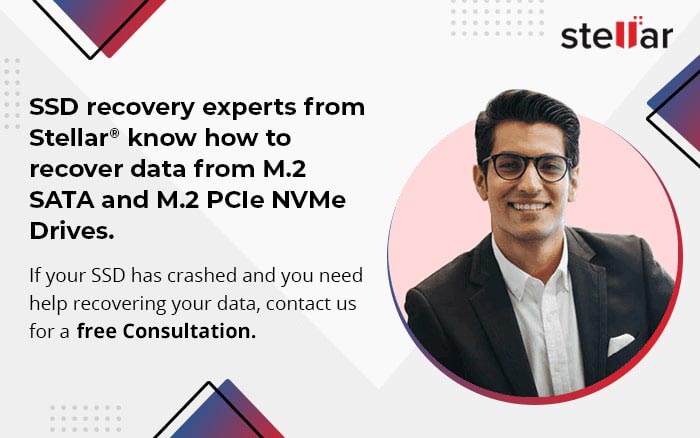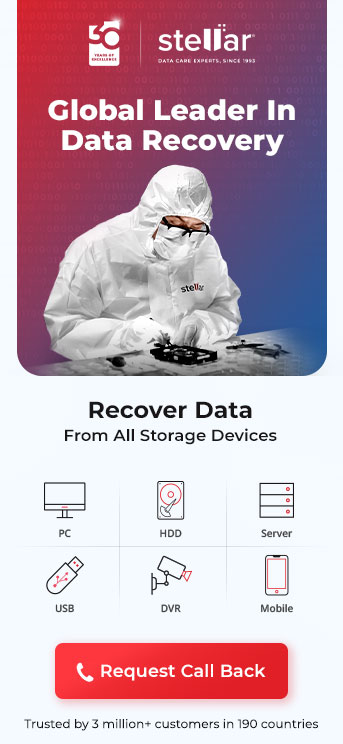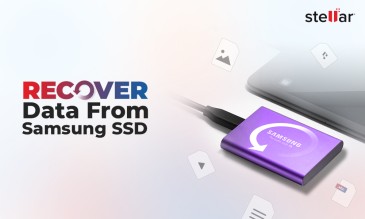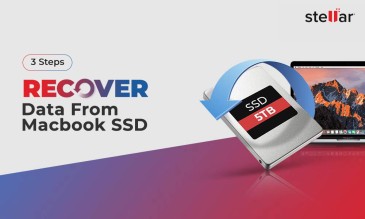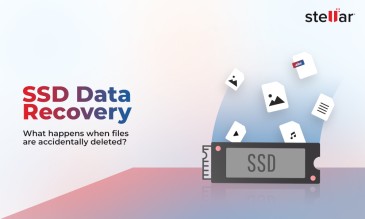NVMe is a relatively new technology that boosts the speed of SSDs even further.
With a SATA interface, solid state drives were limited to about 500 MB/s speed.
That was fast in comparison to spinning platter hard disks but hardly enough for data centres that connected thousands of users with servers
Enter Non-Volatile Memory Host Controller Interface Specification. Or NVM Express, more popularly known as NVMe.
Low-end NVMe SSDs that cost $50 can work at 2000 MB/s.
What Is NVMe Technology?
Like PATA and SATA, NVMe is an interface.
If you have ever seen inside a desktop, you must have seen the various connectors. The flat PATA cables from older computers, the slender red ribbon SATA cables, the PCI Express slot into which you fit the motherboard, and the ubiquitous USB slot.
All of these are interfaces that allow data transfer.
NVMe is not a new SSD technology but an SSD that has a PCI Express connector (among many other types beyond the scope of this article).
An interface (or data bus as they are called) allows quick transfer of data between components.
Think of a laptop booting. The CPU has to sort through at least 1 GB of data from Windows System Files.
The faster the SSD can get it to the CPU, the faster it would boot.
Here’s a comparison.
| Scenario | Booting Speed |
| Laptop running on hard disk | 60 seconds |
| Laptop running on SATA SSD | 20 seconds |
| Laptop running on NVMe SSD | 10 seconds* |
*A lot depends on what other software like antivirus is booting and the size of RAM, RAM speed, CPU speed, etc.
What Makes NVMe SSDs An Excellent Storage Media For SMBs?
1. Faster
NVMe is much faster. That is a crucial advantage over HDD and SATA SSDs.
- A traditional HDD has a data transfer rate of 100-200 MB/s.
- A SATA SSD has a speed of no more than 550 MB/s.
- But plug in an NVMe SSD and you would see an instant jump to 2000 MB/s.
That means it can copy a 1080p movie in about 2-3 seconds.
A Seagate FireCuda 530 PCIe 4.0 NVMe can read/write at 6900 MB/s.
2. Affordable
The price of SSDs has fallen dramatically. It is because of the widespread adoption of flash memory as an efficient alternative to traditional HDD. The price drop has been reflected in the NVMe end of the market too.
You could buy a Seagate FireCuda 530 1 TB is priced at ₹15,000.
That is top of the line.
A more down-to-earth Crucial - P2 1 TB PCIe Gen 3 x4 with a read/write speed of 2300 MB/s would set you back by a mere ₹8,000
3. Encryption
A SATA SSD does not offer encryption unless you go for a top-of-the-line model. In contrast, NVMe SSDs come with XTS-AES 256-bit encryption technology.
Self Encrypting Drives, as they are called, come with an AES chip that performs hardware encryption and keeps data safe from hackers.
4. Compact
The best thing about NVMe SSD drives is that they are smaller. Usually, the M2 SSD has a width of 22 mm and a length of 80 mm. But smaller ones with 30 and 42 mm lengths are also available. These are ideal for laptops and ultrabooks where space is at a premium.
NVMe SSDs weigh 8-17 grams and are power efficient, consuming 0.5 watts when idling and 8 watts when operating at full load.
NVMe - Jargon, And Nomenclature
It can get complicated. Far more so than DDR 3 and DDR4 clock speeds or Nvidia versus AMD graphics card configurations.
Typical configuration on an NVMe SSD box would read M.2 PCIe 3.0 x4
- where M2 is the form factor and usually 22 mm x 80 mm (known as 2280) in the case of SSD (M2 form factor Wi-Fi card, etc. have different size).
- PCIe stands for PCI express slot where till now you have plugged in the graphics card and sound card.
- 3.0 stands for PCIe version 3. Also available is PCIe version 4. Version 5 is on its way.
- x4 references to the throughput of data (or simply put, the width of the pipe).
Whereas PCI3.0 x4 can carry 3.9 GB/s, a PCI 4.0 x4 can carry 7.8 GB/s
You can’t fit a PCI 4.0 x4 card on a four-year-old PCI 3.0 motherboard and expect it to give top performance.
Note that the box might not mention NVMe (as in our example above). PCIe SSD is the same as NVMe SSD.
Also, the BIOS needs to support NVMe.
This usually means motherboards that are older are ruled out. Intel H310 chipsets released in 2018 April don't support NVMe SSDs but Z 370 released in 2017 October supports it.
Same for AMD chipsets.
That is why it should not be installed on budget motherboards unless it specifically mentions support for NVMe:
For example, (sample specs)
M2 socket with M pin type 2242/2260/2280/22110 or NVMe PCIe 3.0 x4 22110 M.2.
Summary: As long as you install a NVMe SSD on a motherboard that mentions NVMe (or PCIe) and M2 you are safe. If it mentions M2 with M pin type 2280 you are absolutely safe.
Also Read: Data Recovery From PCIe NVMe SSDs
NVMe Versus SATA
| SATA SSD | NVMe SSD |
| Uses Advanced Host Controller Interface or AHCI which is an old Intel standard. | Newer Non-Volatile Memory Host Controller Interface Specification that is governed by NVM Express Work Group. |
| Designed for rotating platters. | Designed for NAND flash memory. |
| Has a single command queue. | Has 65000 command queues. |
| Can handle 32 commands in each queue. | Can handle 65000 commands in each queue. |
| Half duplex data transmission. | Full duplex data transmission. |
| SATA III can transfer 600 MB/s. | PCIe 4.0 x4 can transfer 8000 MB/s. |
| On board encryption. | No native encryption is possible. |
What To Do In Case Of Data Loss In Your NVMe SSD?
Data loss can be of two types:
NVMe SSD Logical Data Loss
In this type of loss, the file is there but the metadata in the file table that showed its location has been deleted.
We can imagine at least four situations (in addition to malware attacks).
- Accidental File Deletion
- Accidental Partition Deletion
- Accidental Formatting
- File Table Error
NVMe SSD Physical Damage
- Data lost because the SSD is damaged due to heat or dust or shock.
- Data lost due to SSD controller malfunction.
Also Read: Some Common Warning Signs of SSD Failure
In case you deleted data accidentally from your NVMe SSD, use Stellar Data Recovery Software to extract all types of files. Download the EXE and run the program. The intuitive UI would guide you through the rest.
If there is physical damage then Stellar Data Recovery Service can help. Data lost because of physical damage to an NVMe SSD can’t be recovered by software. NVMe SSD Data Recovery requires professionals.
Stellar, an ISO 9001- 27001 organisation, has been India’s leading data recovery service for 25+ years now. We are trusted by clients the world over, including Fortune 500 companies and top Indian business houses.
If you need help with NVMe SSD data recovery, call us today.
Also Read: Data Recovery From PCIe NVMe SSDs
NVMe SSDs: FAQs Answered
M2 was known as Next Generation Form Factor. In the case of SSD, it refers to sizes of 2230, 2240, 2260, 2280 (most common), and 22110 (to be read as 22 mm x 30 mm).
Top notch Samsung 980 PRO M.2 2280 1TB PCI-Express Gen 4.0 x4 can cost $150 at Newegg while Crucial P2 500GB PCI-Express Gen 3.0 is a lot cheaper.
Not beyond a point. If you want the older desktop or laptop to boot from NVMe you need a new motherboard that supports NVMe.
It stands for terabytes written. A good quality SSD can have a life of 60 - 150 TBW which safely provides the scope to write 200 GB daily for a year.
The AES chip uses 128 or 256-bit encryption. AES Standards have been formulated by the US government and are considered very safe.
Yes, it’s possible. You can accidentally delete files using Stellar Data Recovery Software. If the SSD is physically damaged, send it to our data recovery lab.
Proper revival of an NVMe SSD requires advanced cloning technology. At Stellar Data Recovery, we can clone your NVMe SSD and then recover data from the clone.
About The Author

Online Marketing Expert & Content Writer




